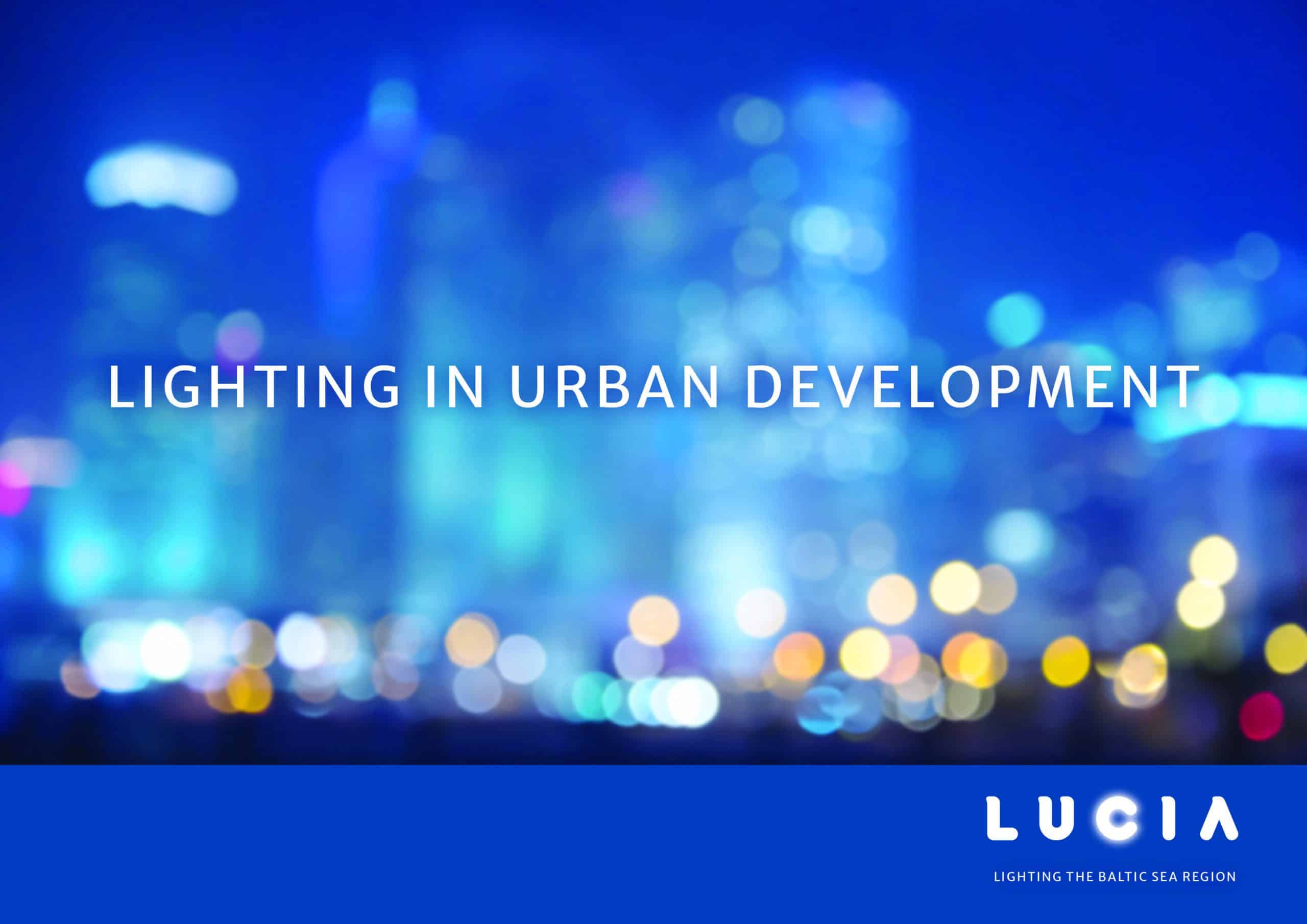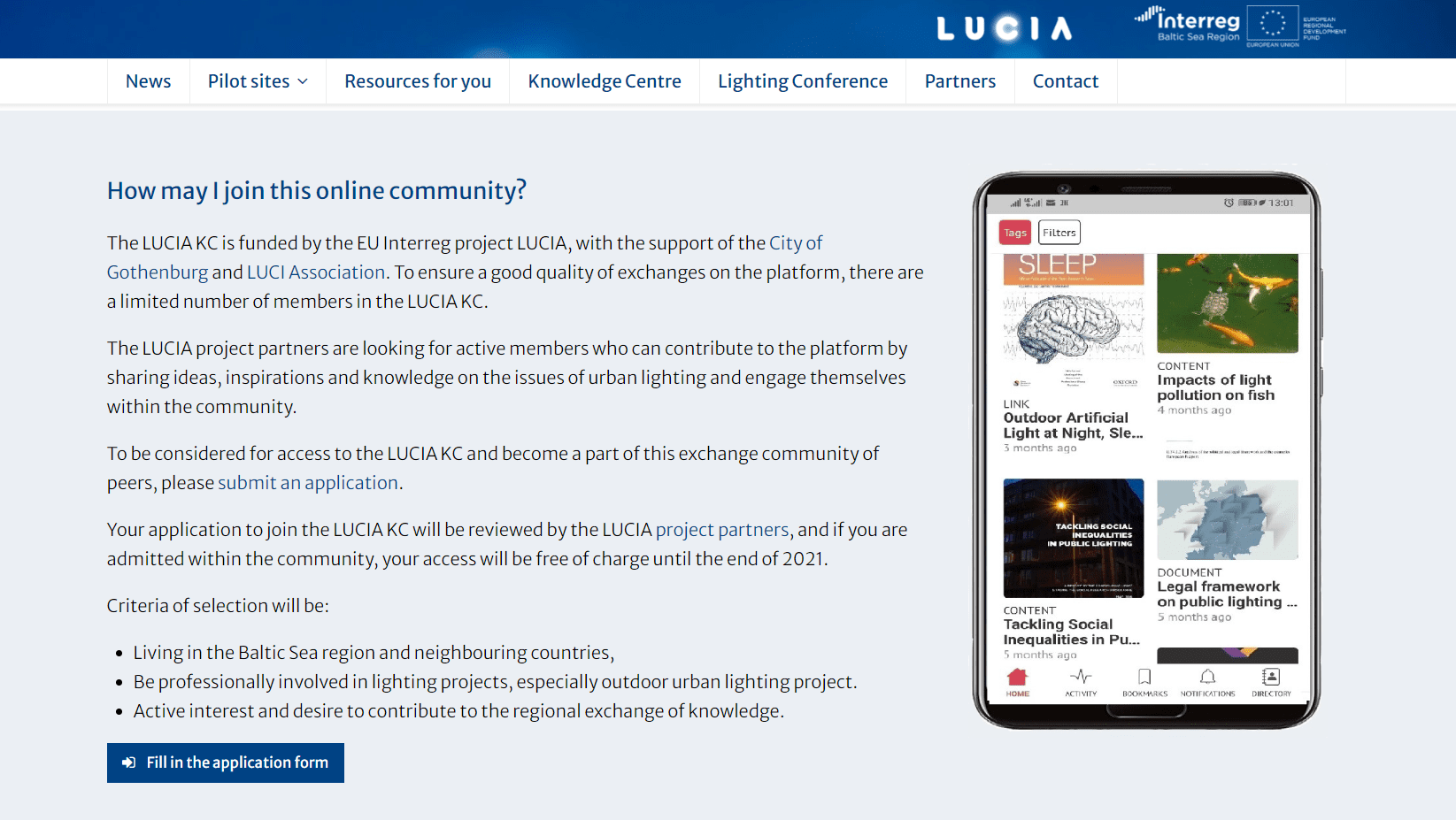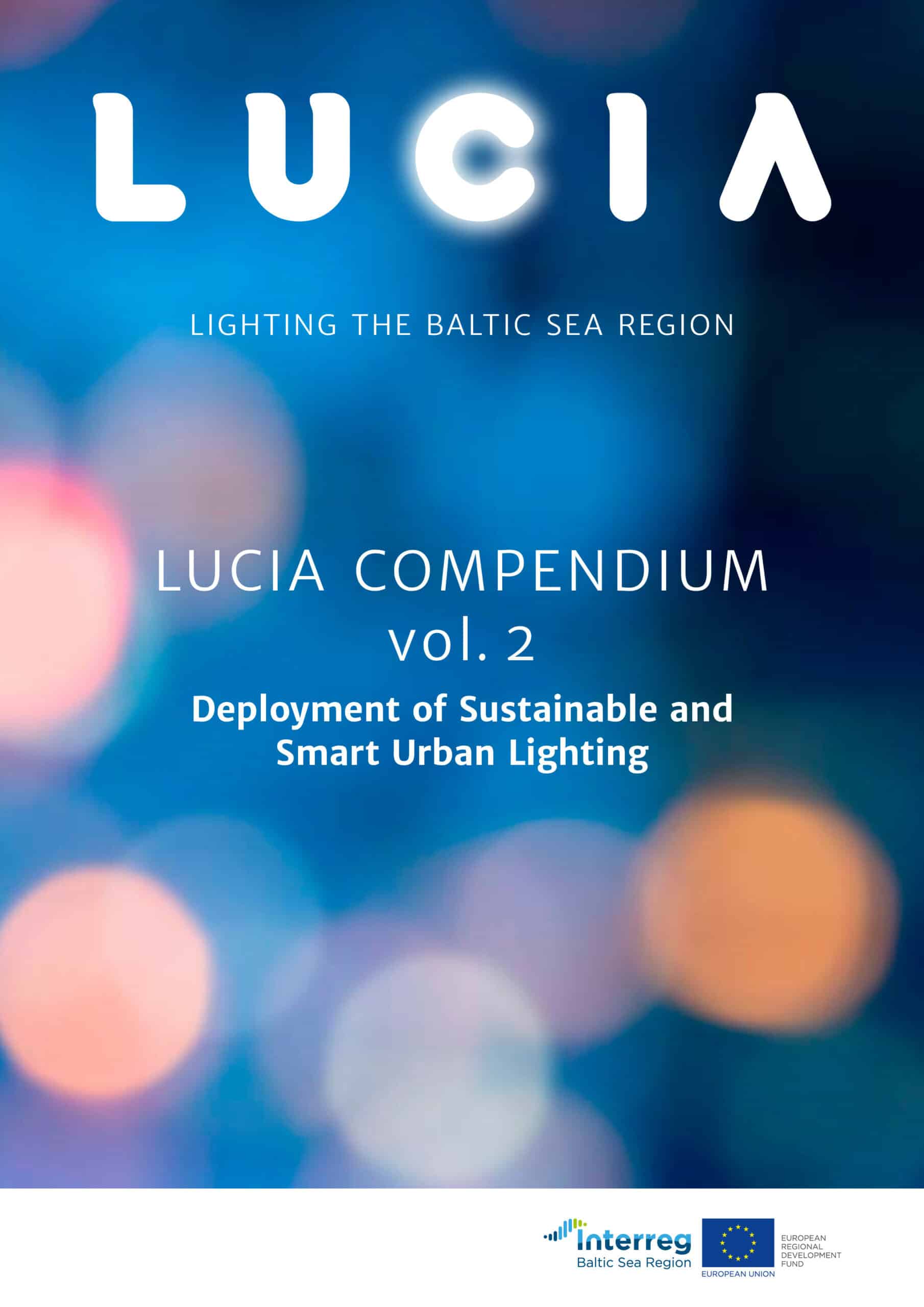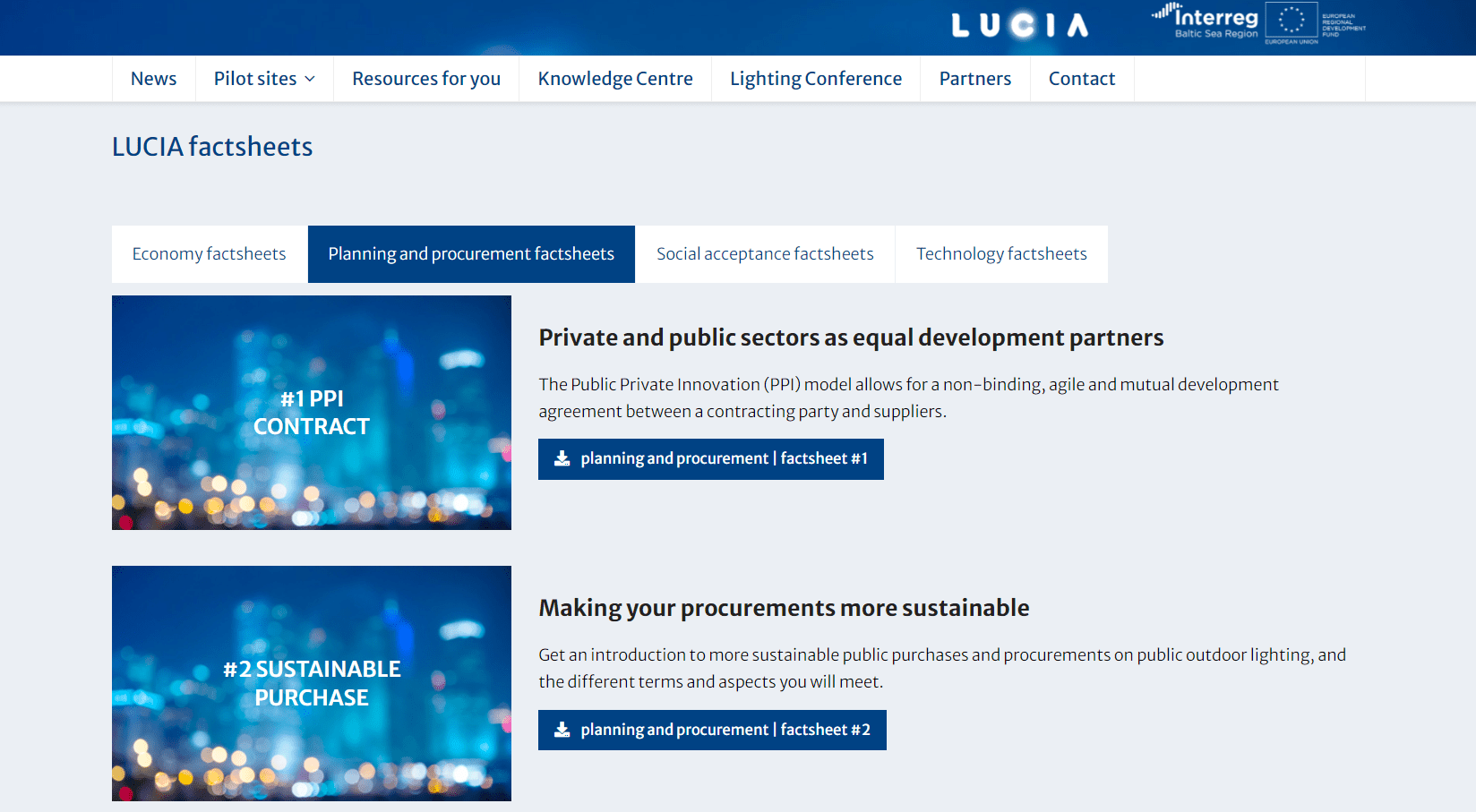LUCIA
New lighting solutions for cities
Urban lighting plays an important role in the city design in the Baltic Sea region. In fact, 60% of the overall energy consumed in urban areas is attributed to street lighting and other urban lighting, e.g. for infrastructure. Modern LED lighting has energy savings potential of 50% compared to conventional systems. Other functionalities, such as an automatic adjustment of luminosity, additionally raise that potential.
Innovate through piloting
LUCIA addressed the challenges by introducing lighting solutions into urban planning, and by this helping municipalities reduce energy consumption. The project installed LED energy efficient lighting in Albertslund (Denmark), Hamburg (Germany), Jurmala (Latvia), Porvoo (Finland), St. Petersburg (Russia) and Tallinn (Estonia). Besides, the replication potential was then evaluated by metropolitan regions of Copenhagen, Hamburg, Riga, Helsinki-Uursimaa, St. Petersburg and Tallinn. In addition, the project set up an online urban lighting centre to connect managers responsible for city lighting in order to exchange experiences on planning procedures and selection of urban lighting solutions.
Budgets
in numbers
-
3.11MillionTotal
-
2.17MillionErdf
-
0.28MillionEni + Russia
-
0.00MillionNorway
Achievements
Cooperation accelerates the deployment of intelligent solutions
LUCIA brought together municipal and regional public authorities and experts from 7 countries of the Baltic Sea region. The piloting cities provided the sites for testing new technologies, while the experts advised the municipalities to get sufficient information on urban lighting solutions and make installations. Together, policy makers, urban planners, experts, public managers as well as citizens and interest groups geared up the deployment of sustainable and smart urban lighting solutions. Co-creation, engagement in urban planning processes and interest in improving the living environment shaped the needed conditions for a change.
Inspiring cases of urban lighting installations
The installation of modern LED lighting in 6 cities was as a tangible result of how the project helped transform urban lighting into smart and sustainable. Pilots focused on walking and cycling areas to promote active mobility.
In Jurmala (LV), existing high-pressure sodium street lighting on Jomas street was replaced with LED solution with dimming and motion sensors. As a result, 40% energy was saved. In Albertslund (DK), existing light points located in DOLL Living Lab were upgraded with motion detection technologies. This improved the site energy savings, safety and security, as well as light quality. In Hamburg (DE), the Elbewanderweg and the Schröders Elbschlosstunnel feature now new lamps which respect rare animal species in the area. The pilot was characterised by a participatory decision process with citizens. In Porvoo (FI), LED lightning was installed on a pathway along Porvoonjoki, which improved connection between city residential area to service areas, reducing car traffic. In Tallinn (EE), LED lightning in the Canute Garden and in St Petersburg (RU) LED lightning in the campus of the Peter the Great Polytechnic University featured functional and artistic systems, which well match with the historical surrounding areas. In the Tallinn pilot, the project secured 47% reduction in energy consumption.
Outputs
Booklet on lighting in urban development

Knowledge Centre

Compendium “Lighting cities of the Baltic Sea Region”

Factsheets collection

Project Stories
Partners
Free and Hanseatic City of Hamburg
- TownHamburg
- RegionHamburg
- CountryGermany
- RepresentativeHeike Bunte
- Phone
- E-Mail
- Web
Tallinn University of Technology
- TownTallinn
- RegionPõhja-Eesti
- CountryEstonia
- RepresentativeAlvar Kurrel
- Phone
- E-Mail
- Web
Posintra Ltd
- TownPorvoo
- RegionHelsinki-Uusimaa
- CountryFinland
- RepresentativeArto Varis
- Phone
- E-Mail
- Web
City of Porvoo
- TownPorvoon kaupunki
- RegionHelsinki-Uusimaa
- CountryFinland
- RepresentativeKari Hällström
- Phone
- E-Mail
- Web
Municipality of Tallinn
- TownTallinn
- RegionPõhja-Eesti
- CountryEstonia
- RepresentativeTarmo Sulg
- Phone
- E-Mail
- Web
Riga Planning Region
- TownRiga
- RegionRīga
- CountryLatvia
- RepresentativeIlgvars Francis
- Phone
- E-Mail
- Web
Gate 21
- TownAlbertslund
- RegionKøbenhavns omegn
- CountryDenmark
- RepresentativeSif Enevold
- Phone
- E-Mail
- Web
Jūrmala City Administration
- TownJūrmala
- RegionPierīga
- CountryLatvia
- RepresentativeIeva Šponberga
- Phone
- E-Mail
- Web
Göteborgs City, Urban Transport Administration
- TownGothenburg
- RegionVästra Götalands län
- CountrySweden
- RepresentativeLars Ocklund
- Phone
- E-Mail
- Web
City of Albertslund
- TownAlbertslund
- RegionKøbenhavns omegn
- CountryDenmark
- RepresentativeSteen Westring
- Phone
- E-Mail
- Web
Peter the Great St. Petersburg Polytechnic University
- TownSaint-Petersburg
- RegionCity of St. Petersburg
- Country
- RepresentativeYury Nurulin
- Phone
- E-Mail
- Web
-
Project managerBritta Schmigotzkiatene KOM GmbH
-
Legal representativeSebastian KlothFree and Hanseatic City of Hamburg
-
Financial managerStephan Zeilmeiratene KOM GmbH
-
Communication managerNikolas FinkZEBAU GmbH



